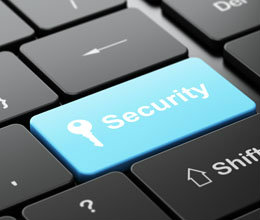
Fraud & Security
Your financial security is important to us. Being informed of the various threats can make all the difference.
{beginAccordion h2}
Ways to Protect Your Privacy
Marketing Lists
The Direct Marketing Association's (DMA) mail, email, and telephone preference services allow consumers to opt out of direct mail marketing, email marketing and/or telemarketing solicitations from many national companies.
To remove your name from many national direct mail lists, write:
DMA Mail Preference Service
Preference Service Manager
1120 Avenue of the Americas
New York, NY 10036-6700
Because your name will not be on their lists, it also means that these companies can't rent or sell your name to other companies.
To avoid unwanted phone calls from many national marketers, send your name, address, and telephone number to:
DMA Telephone Preference Service
Preference Service Manager
1120 Avenue of the Americas
New York, NY 10036-6700
For more information, visit www.the-dma.org.
Credit Reports
Get copies of your credit reports from the three major credit bureaus at least once a year. Check for changed addresses or fraudulent account information. Copies cost about $8.00. To order your reports, contact:
- Equifax 800-685-1111, www.equifax.com
- Experian 888-397-3742, www.experian.com
- TransUnion 800-888-4213, www.transunion.com
For more information about protecting your privacy, visit www.ftc.gov/privacy.
Please note that this information is being provided as a service to you. First Northern Bank is not affiliated with any of these services and cannot guarantee their effectiveness.
Using Online Banking
Whether you are conducting online financial transactions over the Internet or simply "surfing," some easily implemented precautions can help safeguard your personal information from identity theft and account fraud:
Passwords
Security begins with a strong password, which only you, the user, knows. Experts advise a combination of letters and numbers, and advise against using easily guessed passwords such as birthdays or home addresses.
Anti-Virus Protection
Make sure the anti-virus software on your computer is current and scans your email as it is received. This simple step is critical to your personal safety and security when online.
Email Communication
Email is generally not encrypted so be wary of sending sensitive information such as account numbers or other personal information in this way. If you receive an unsolicited email purporting to be from the Bank, be cautious – take time to call the Bank and make sure the email was sent from your banker.
Signing Off
Always log off by following the Bank's secured area exit procedures to ensure the protection of your personal information.
Be Aware
Crooks are trying to get your personal information – and they employ some ingenious methods. Don't respond to any unusual requests for personal information – when you opened your bank accounts you already gave it. When in doubt, call First Northern Bank.
Learn More
Drop by First Northern Bank today to learn more about online banking and the security measures that are in place for your protection. Or contact any of these financial industry regulators.
- Federal Deposit Insurance Corporation
- Board of Governors of the Federal Reserve System
- Office of the Comptroller of the Currency
- Office of Thrift Supervision
- Federal Trade Commission
Understanding what criminals are trying to do over the Internet is the first step in building a good defense.
Most electronic fraud falls into one of three categories. Experts advise: understand these to understand how best to protect yourself.
Identifying the Most Common Online Threats
Phishing
Fraudulent email purporting to be from your bank or a similar trusted source lures you to a copy cat website (one that may look just like your bank's site). Once there, you are instructed to "verify" certain personal information, which is then used to hijack your accounts and your identity. If you receive a suspicious email, delete the message and call First Northern Bank to inform your banker of the email.
Pharming
Also called "domain spoofing," this cyber crime intercepts Internet traffic and re-routes it to a fraudulent site. Once there, the victim is asked to enter personal information, just as with Phishing.
Malware
This is software designed to infiltrate or damage a computer system without the owner's knowledge. Examples of malware (malicious software) include computer viruses, worms, Trojan horses, spyware, and adware.
{endAccordion}

